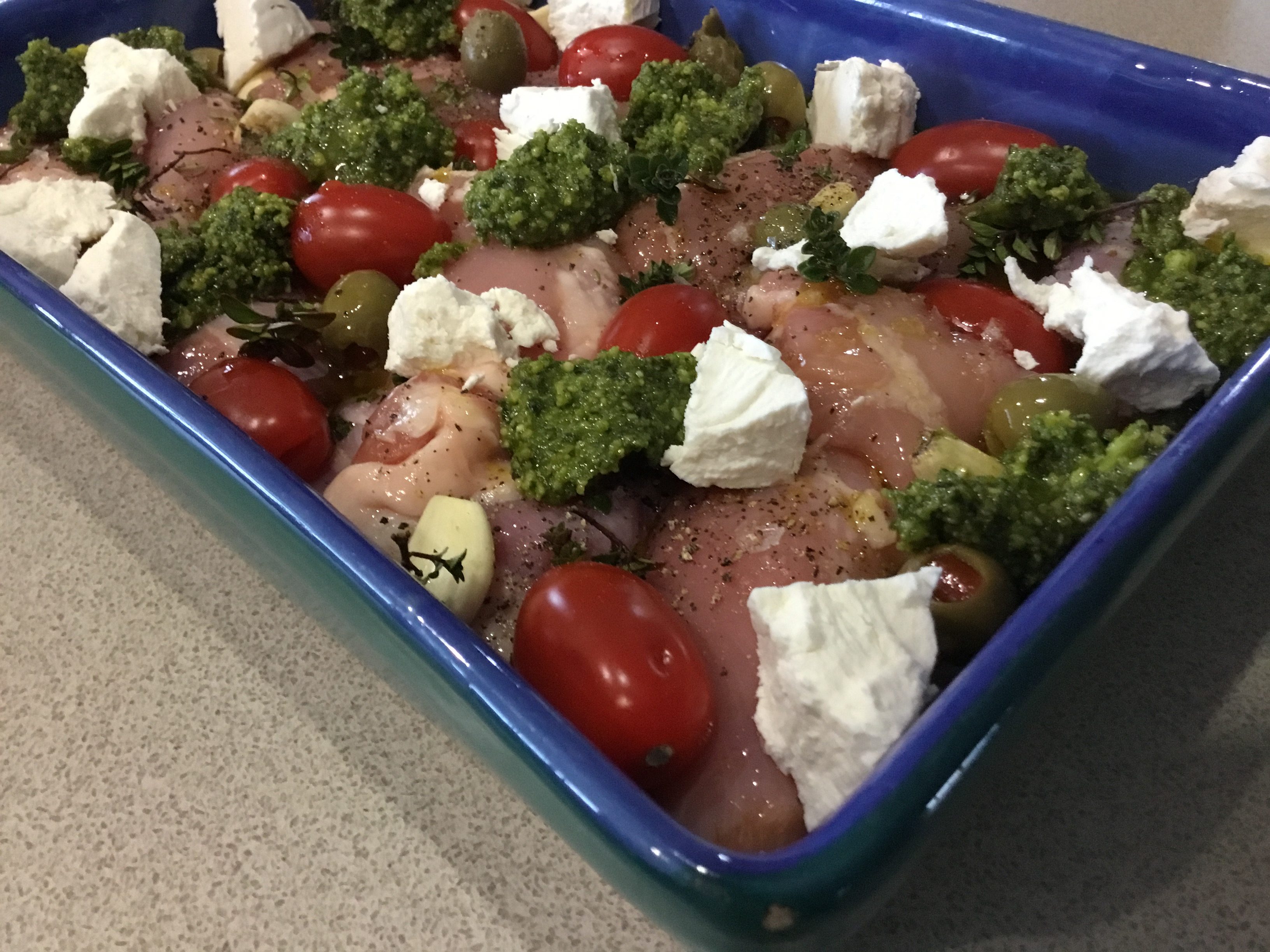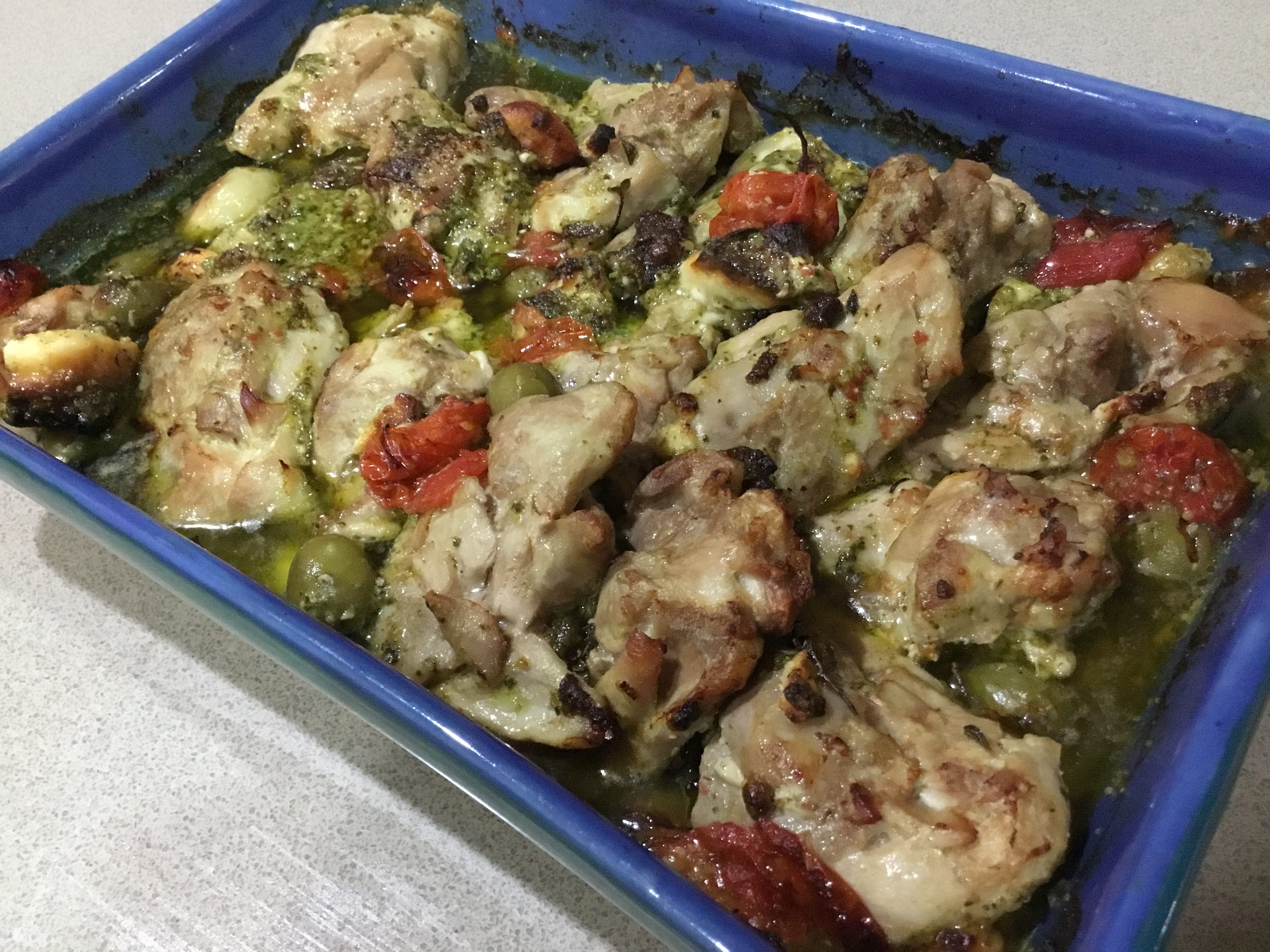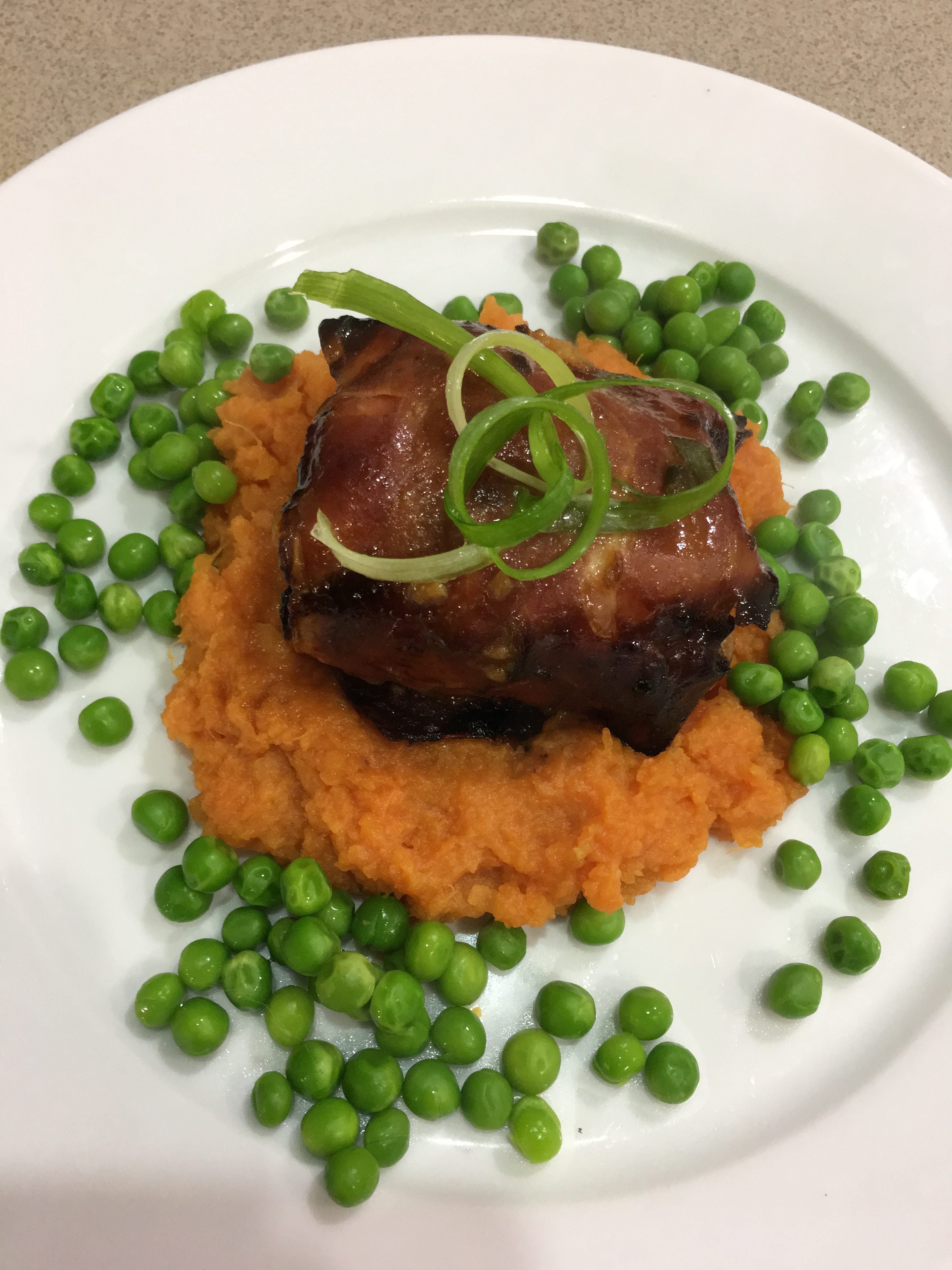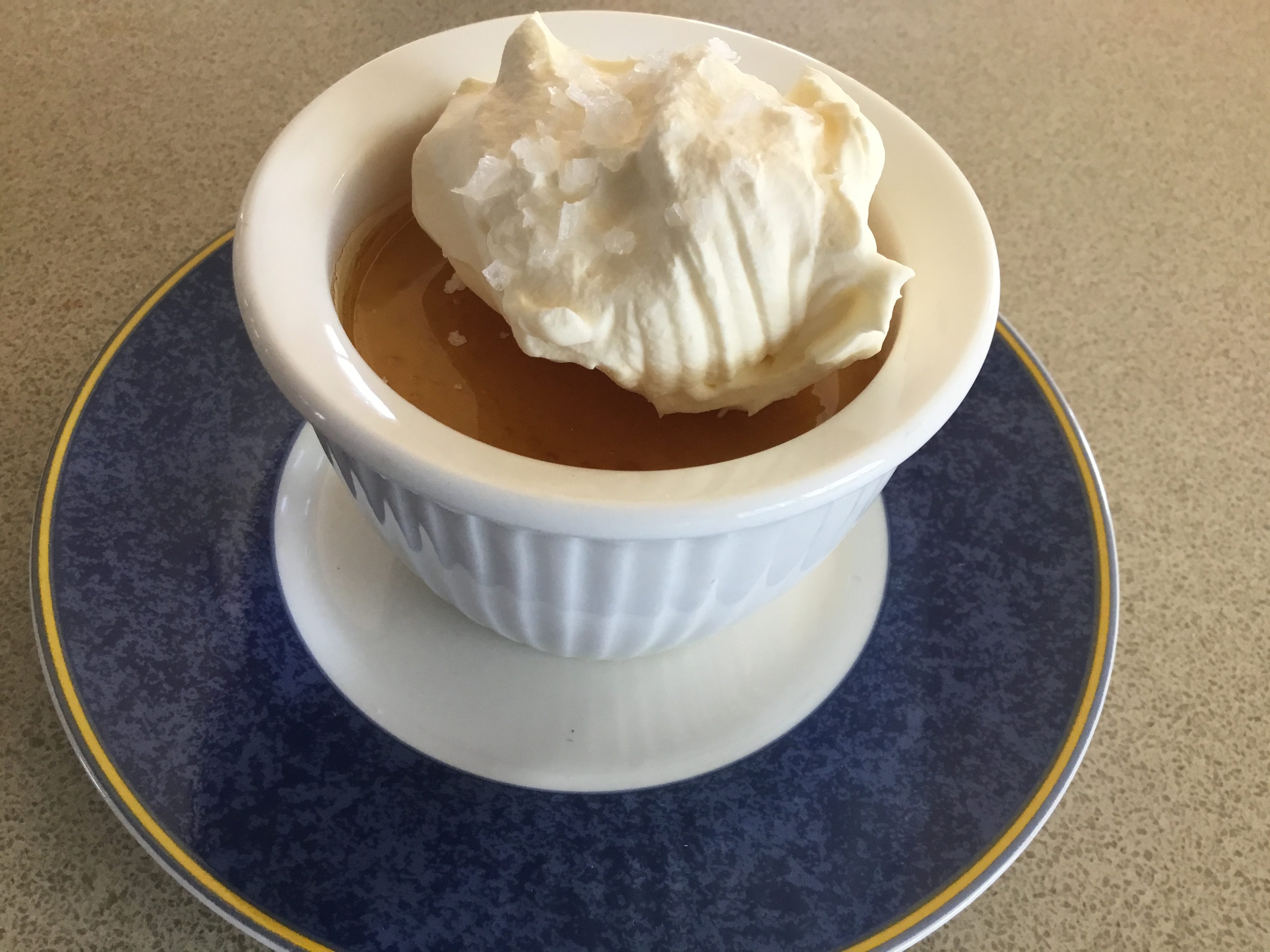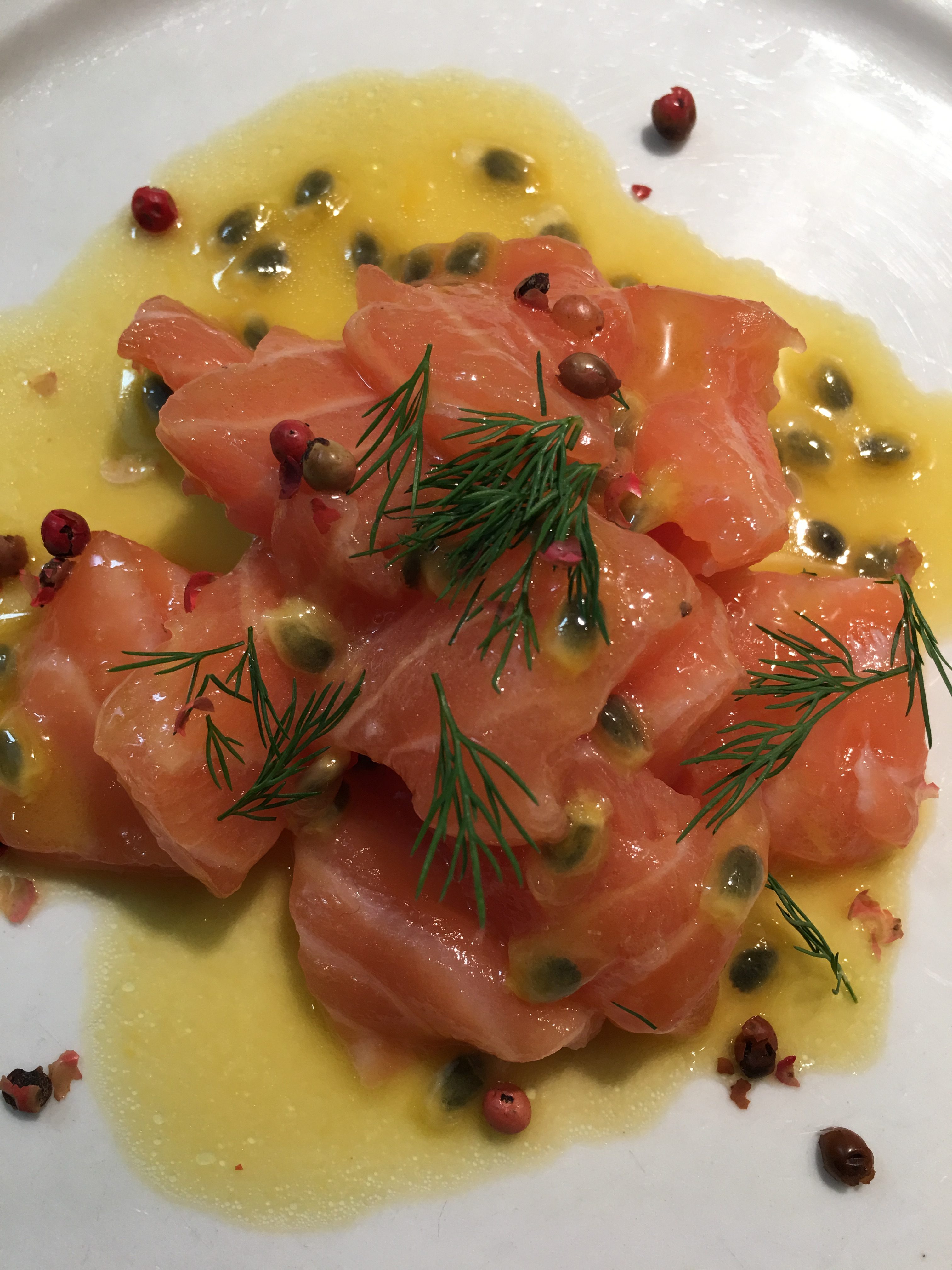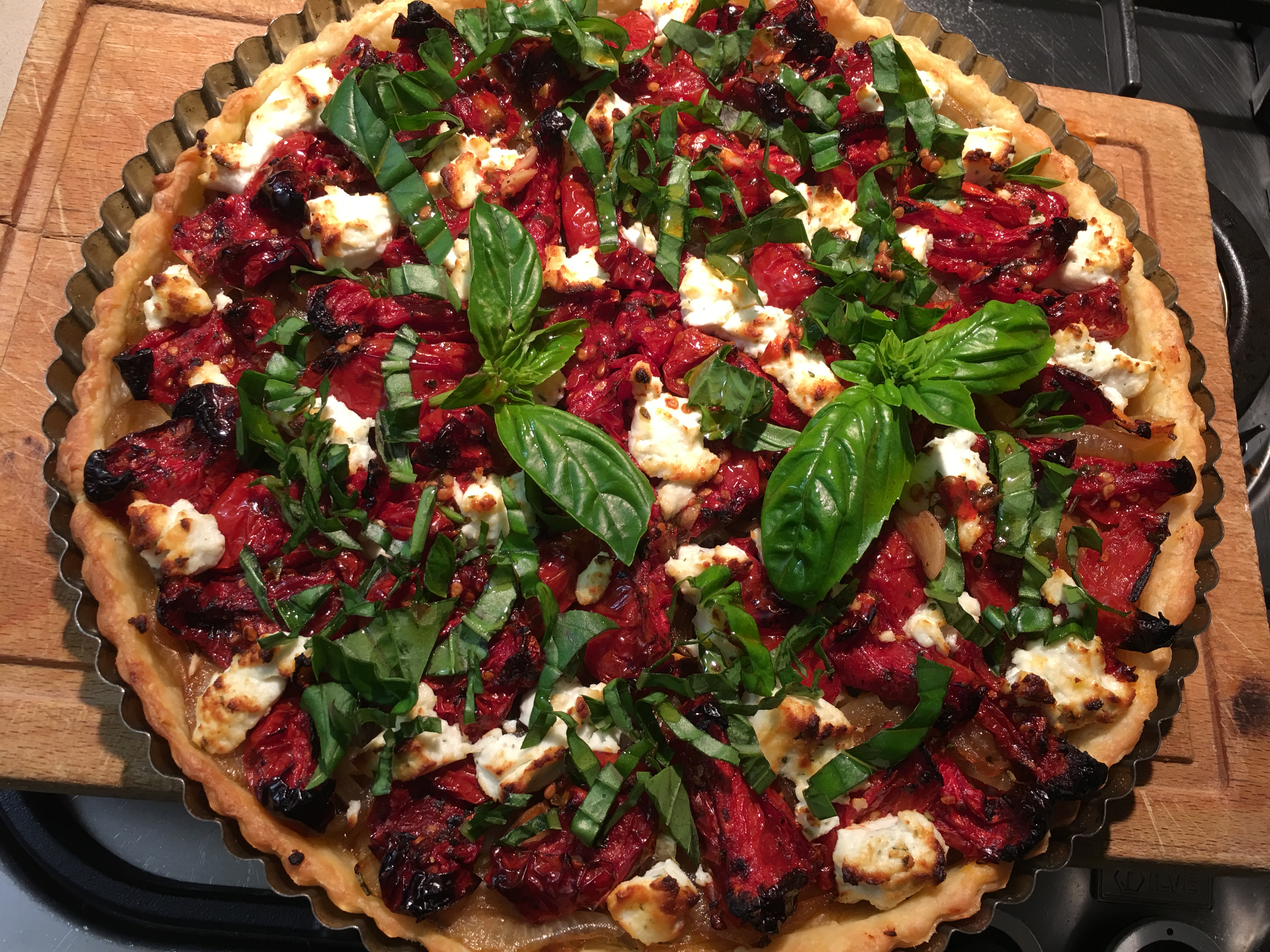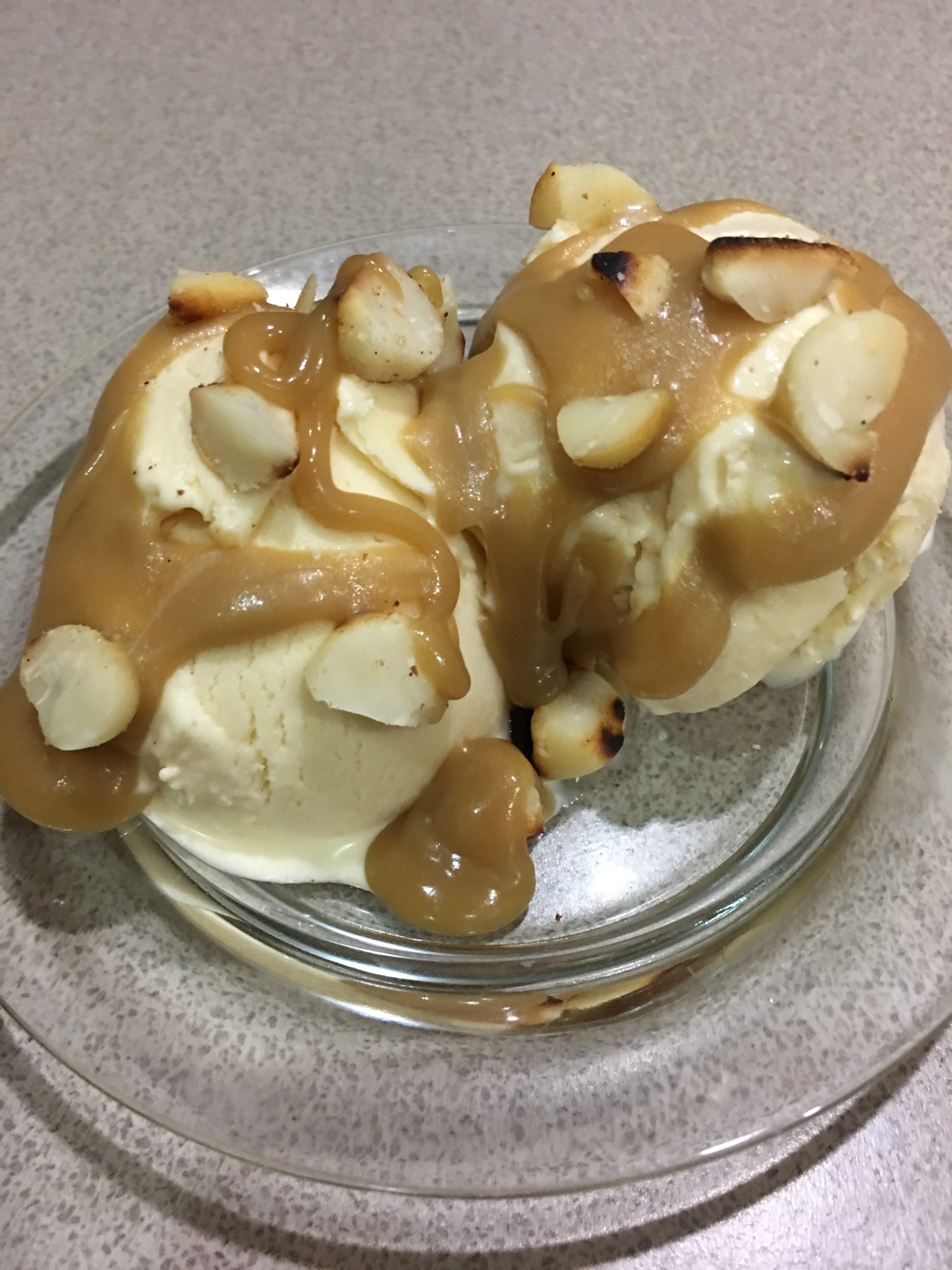This recipe takes a little longer than most of the recipes on this blog, but it’s really not that complicated and an elegant way to feed a crowd.
I bought the salmon at Costco because their salmon never has any bones in it. If there’s one job I really hate it’s removing salmon bones with tweezers. In Australia puff pastry comes in pre-rolled squares which measure about 25x25cm. If you live somewhere it’s sold in a block you will need enough to roll out to a rectangle which is a bit bigger than double the size of the salmon.
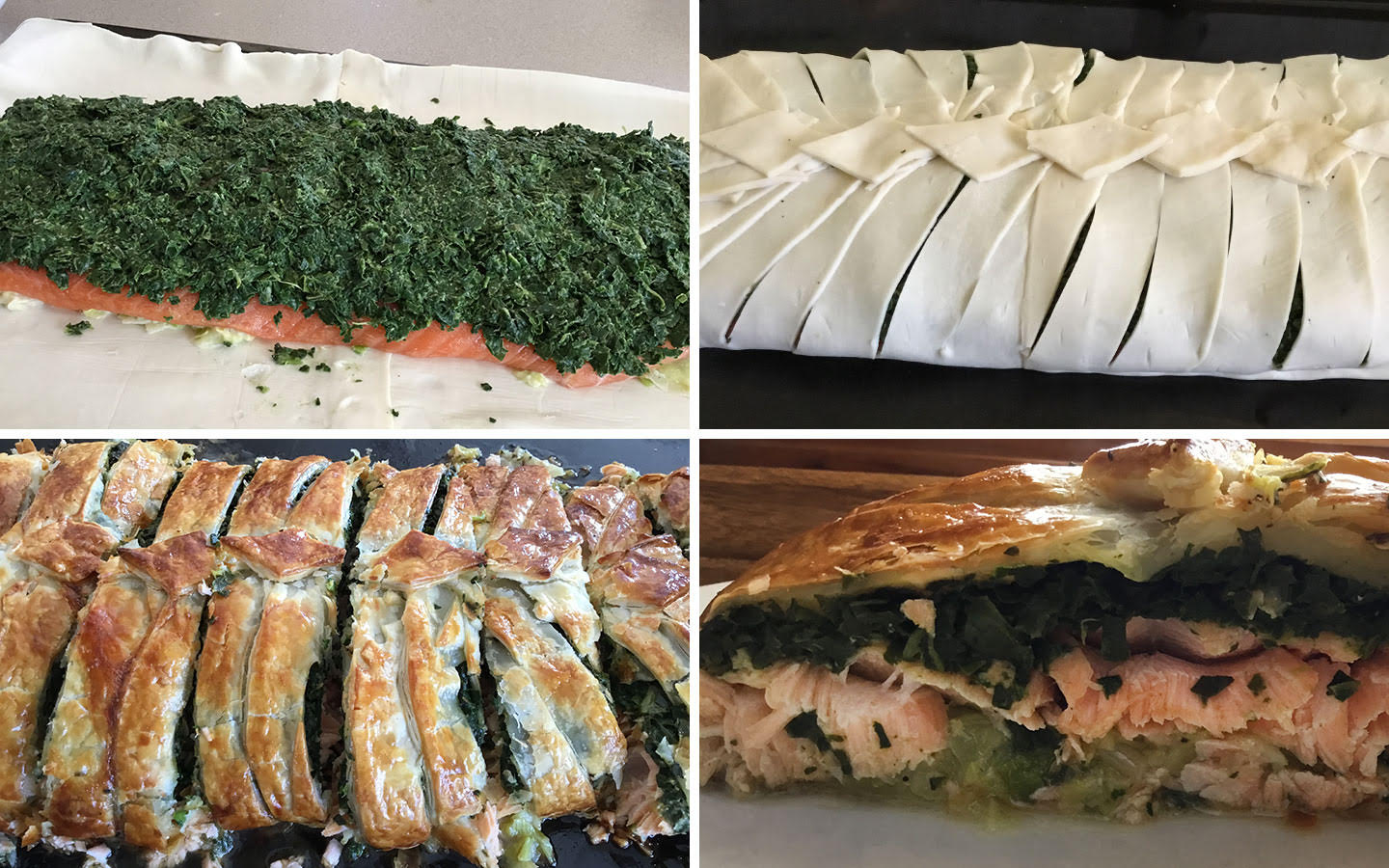
1 side of salmon (skinless and boneless)
Puff pastry (I used three 25x25cm squares)
2 leeks
1 bunch spinach
50g butter
Salt and freshly ground black pepper
½ cup cream
Salt and freshly ground black pepper to taste
1 egg, beaten
To serve:
1 cup mayonnaise (preferably home made)
1 bunch dill, stalks discarded
Clean leeks to remove any grit then chop finely, using all the white part and some of the green. Heat half the butter in a frying pan and cook leeks gently, stirring often, for 10 minutes or until soft but not brown. Add cream and cook until evaporated. Season to taste. Wash spinach and remove stalks. Place in a large saucepan with just the water clinging to the leaves and cook, stirring, until wilted right down. Place in food processor with the remaining butter and process to a slightly chunky puree. Season to taste. Prepare the leeks and spinach the day before and keep refrigerated.
Roll out pastry. I used three ready-rolled squares. Two squares stuck together and one square cut in half and stuck together lengthwise then joined onto the two big squares along the long side. Roll over the joins with a rolling pin so they stick. If using a block of pastry you will need to roll it out thinly to a rectangle slightly larger than twice the size of the salmon. Place pastry on a lightly greased baking tray – I used the shallow oven tray which came with my oven. If liked, line the tray first with baking paper.
Spread the leek mixture down the centre of the pastry in the shape of the salmon, then lay the salmon on top and cover with the spinach. Make sure the salmon is covered entirely by the leeks on the bottom and the spinach on the top. Fold in the two ends of the pastry which should be 2-3 cm longer than the fish. Cut diagonal slashes into the pastry on the two sides as far as the salmon, then bring them in alternately to create a pseudo-plait, pinching the ends together. If it doesn’t look like a work of art, don’t worry it will look amazing when it’s cooked. If liked, arrange a row of diamond shapes, made from pastry off-cuts, down the join in the middle, to cover any imperfections. Refrigerate until serving time.
Preheat oven to 180°C. Brush pastry all over with beaten egg. Bake for 30-40 minutes or until well-browned. Place mayonnaise and dill in food processor and process until smooth.
Serve slices of the salmon pie with the dill mayonnaise. New potatoes and a steamed green vegetable such as broccolini, asparagus, green beans or snow peas go well with this.
Serves 8-10

